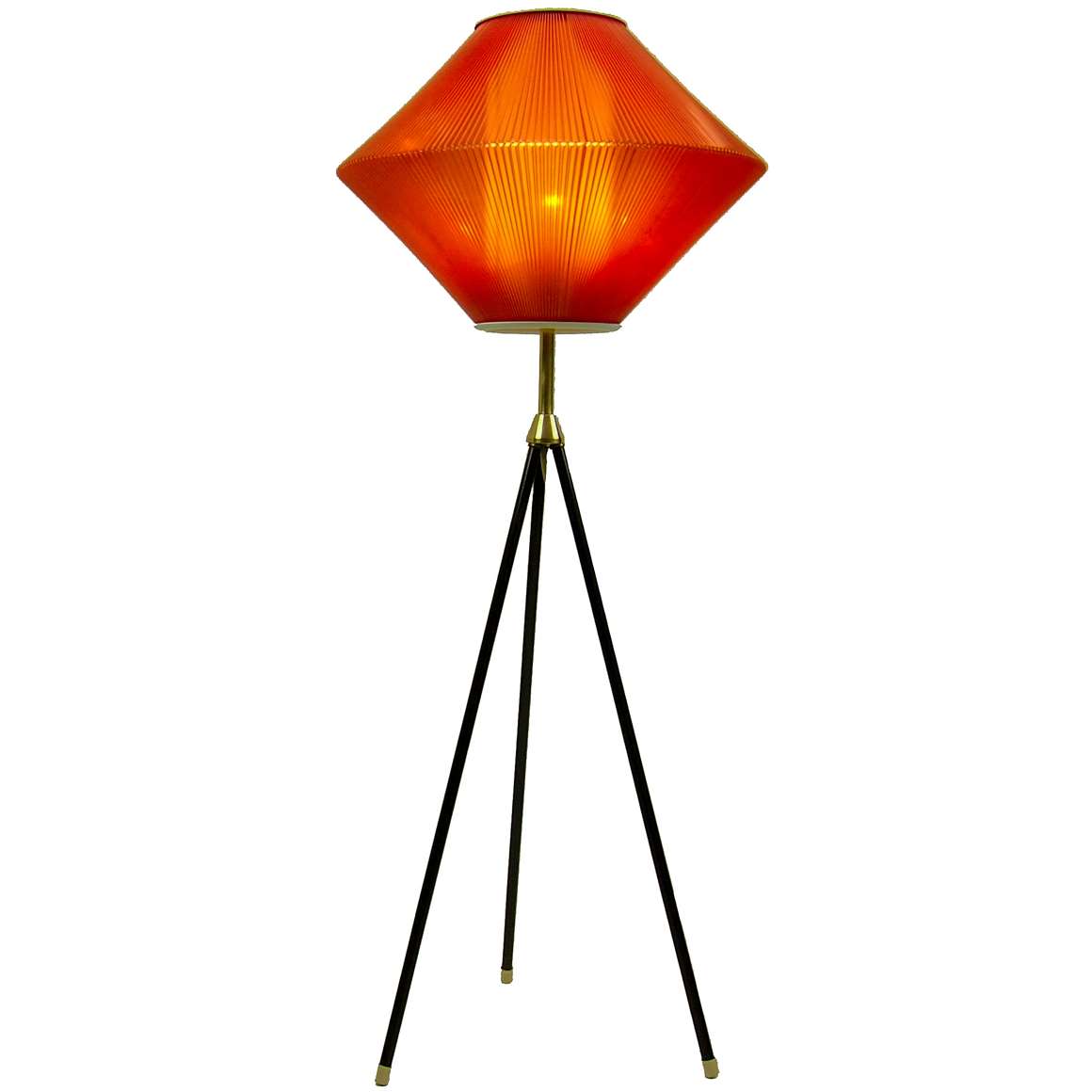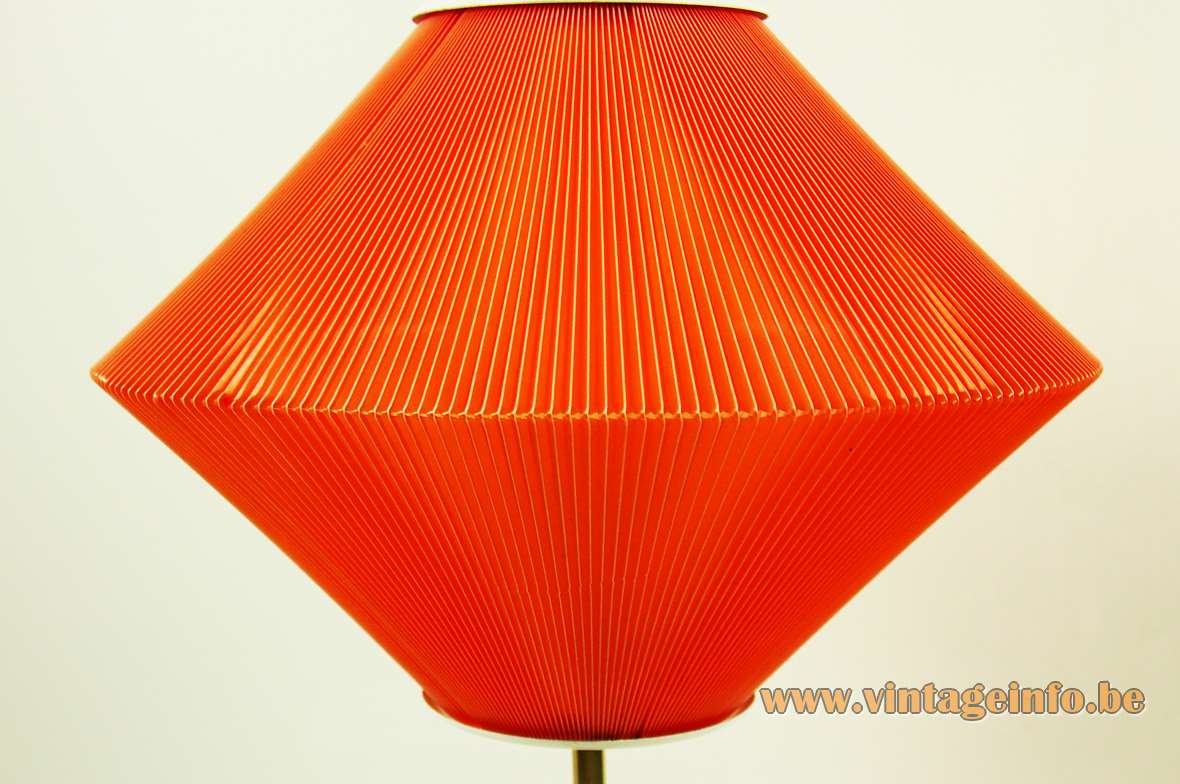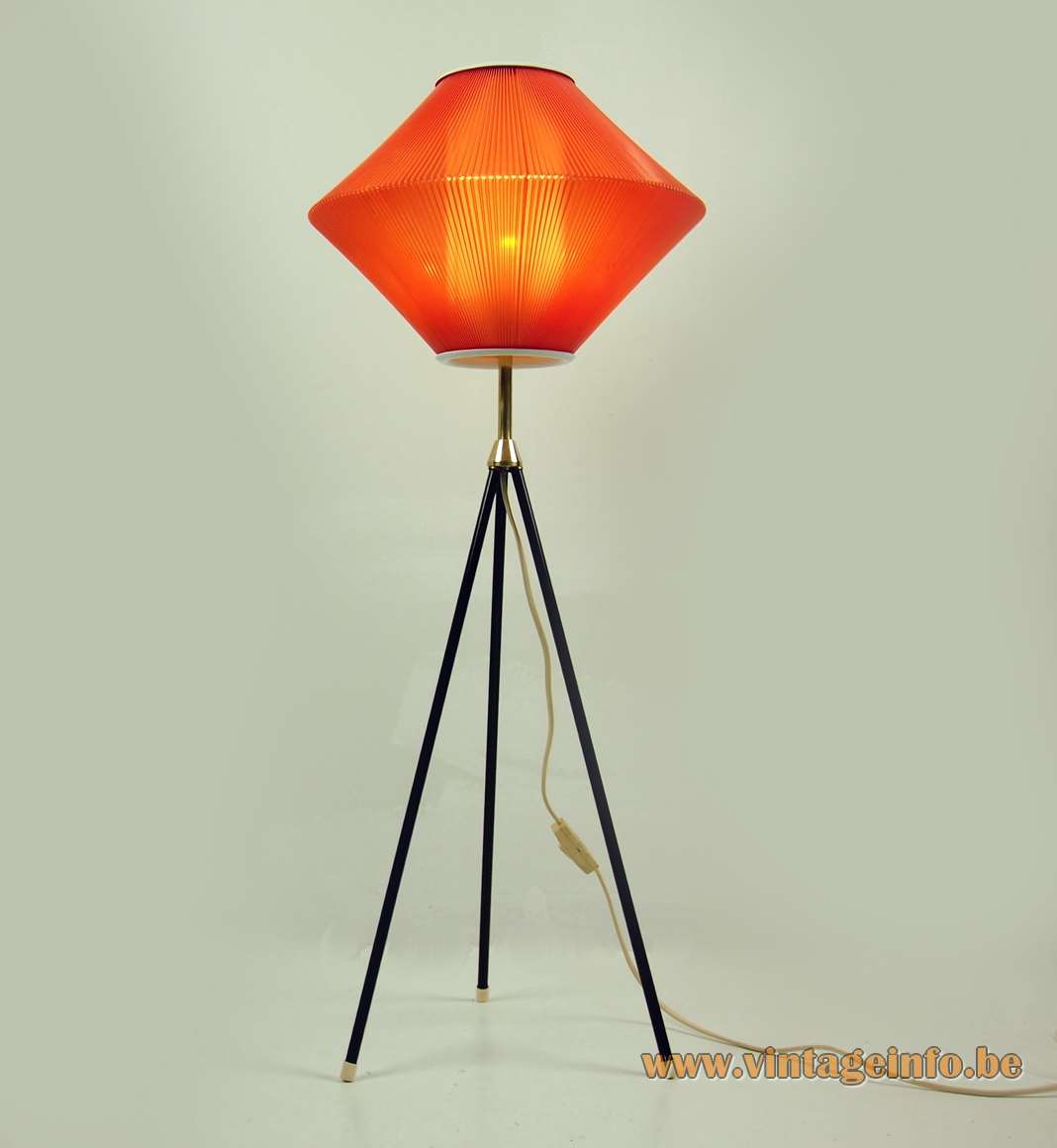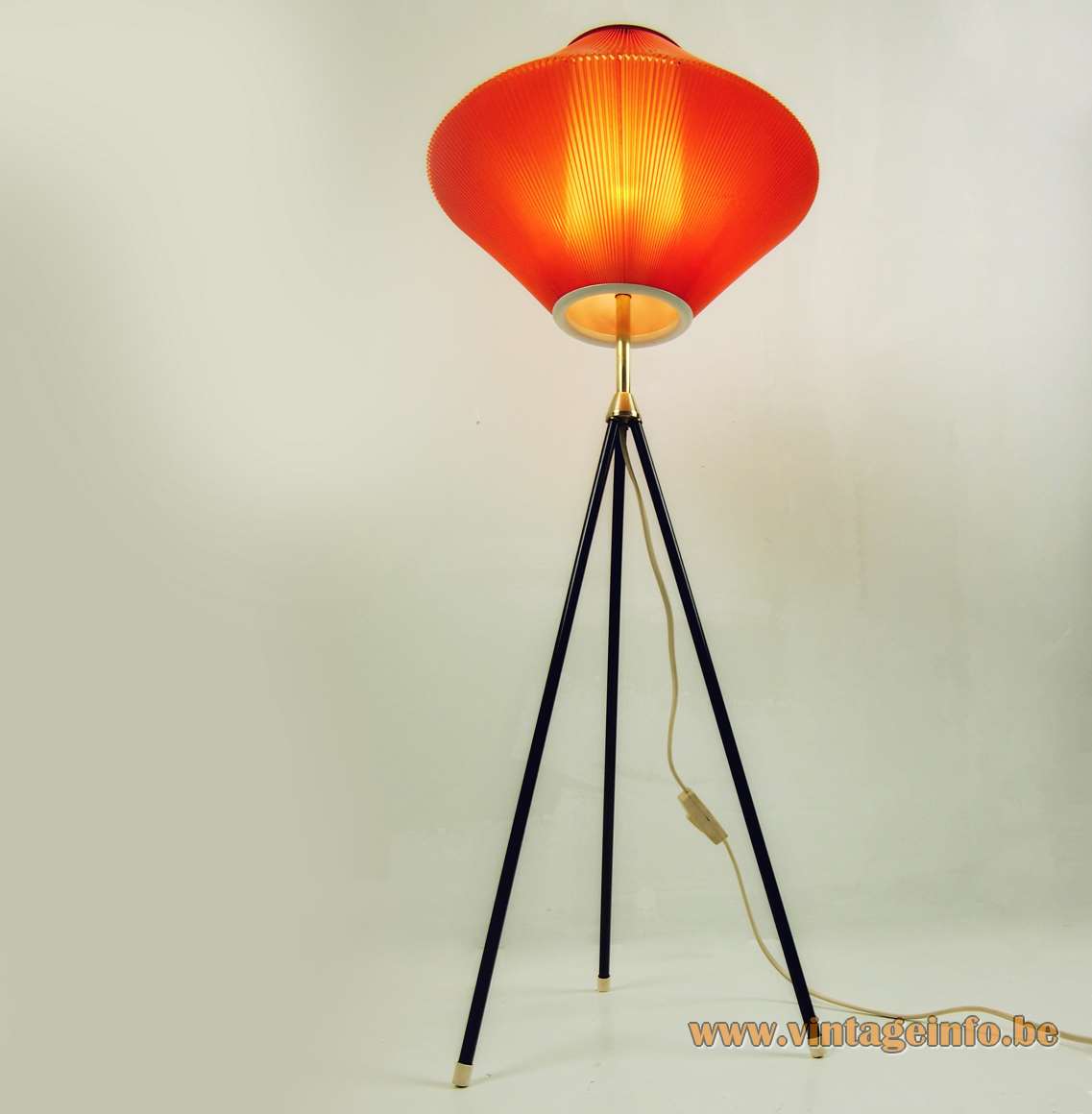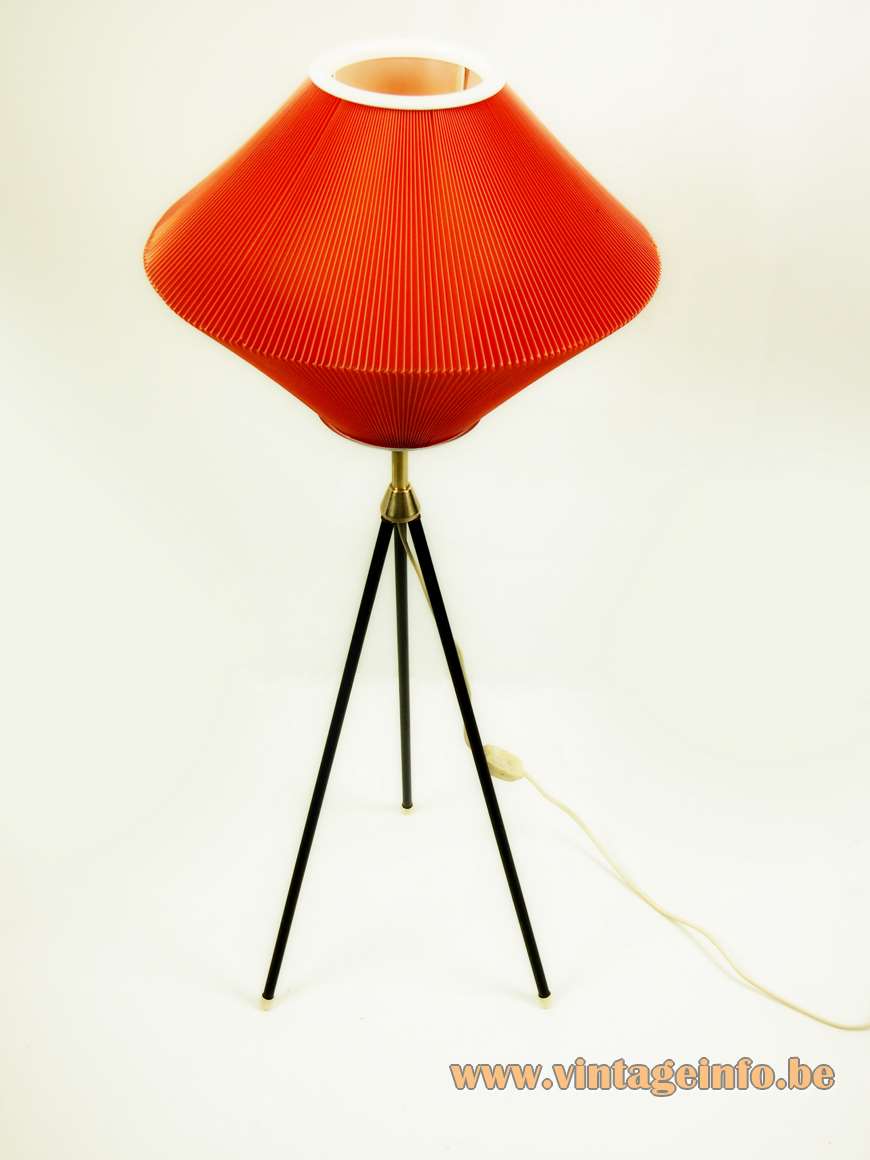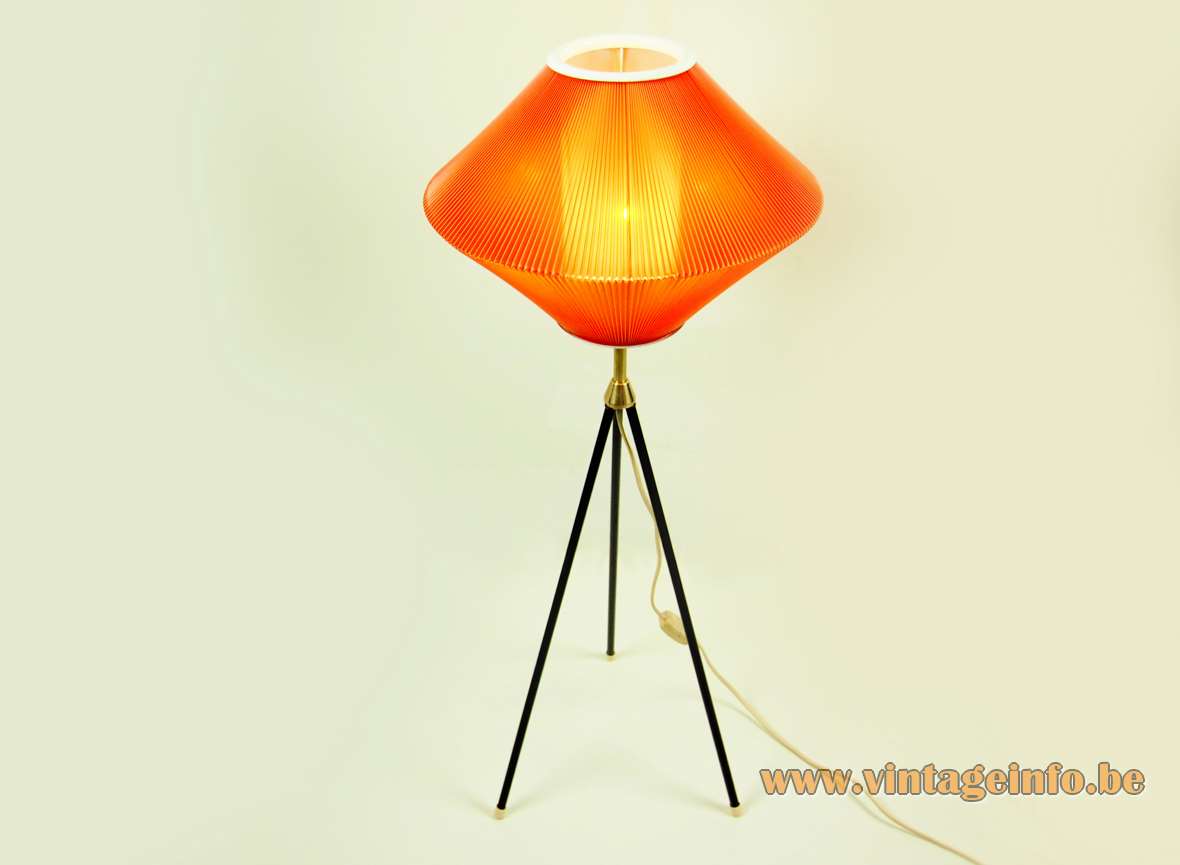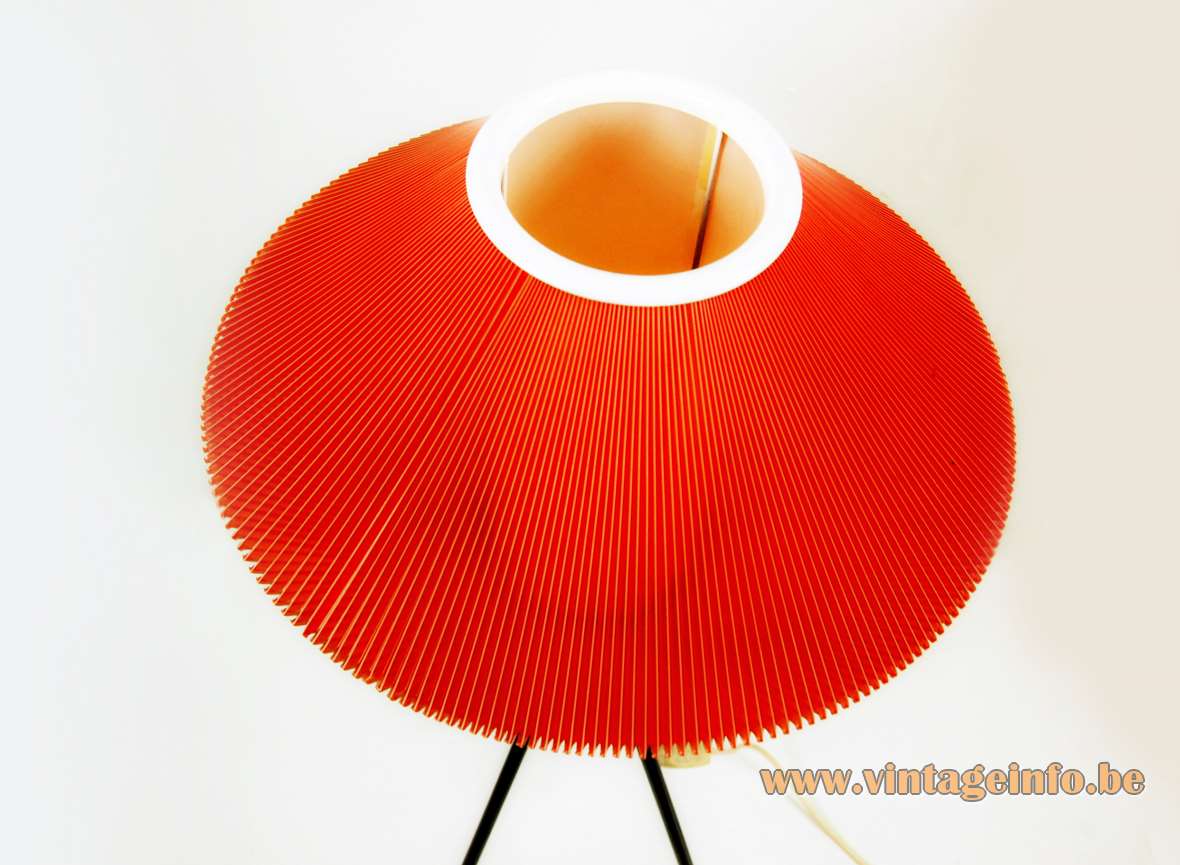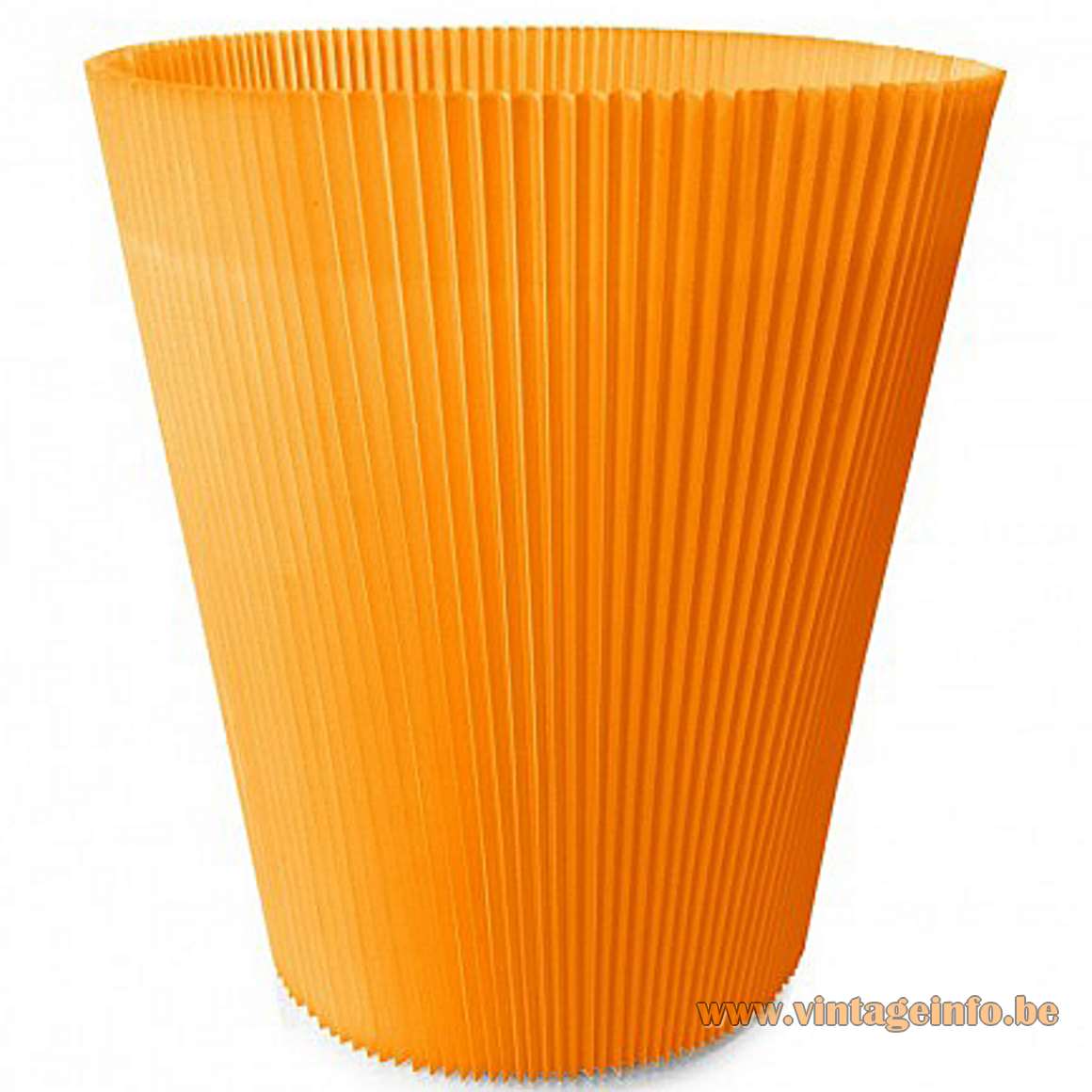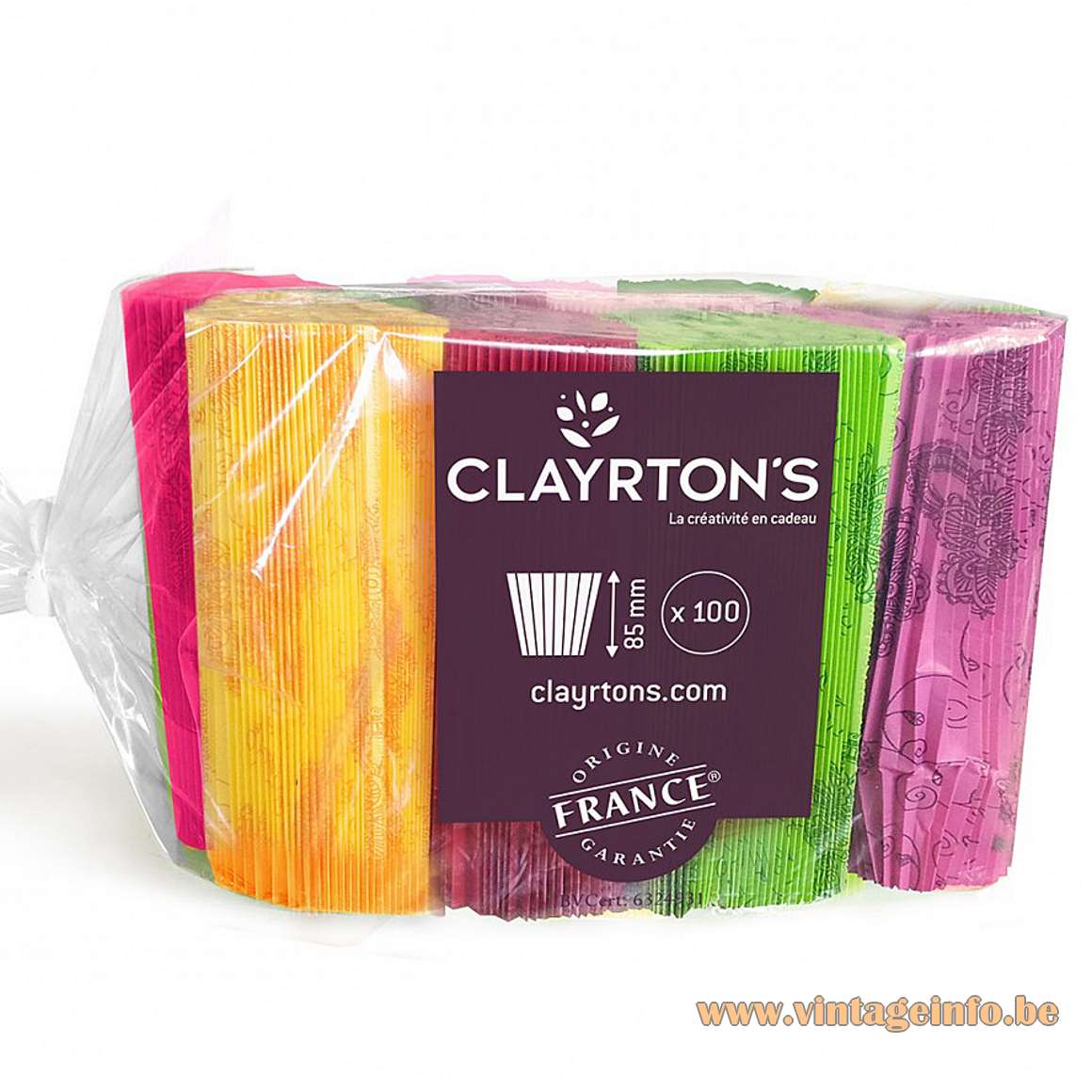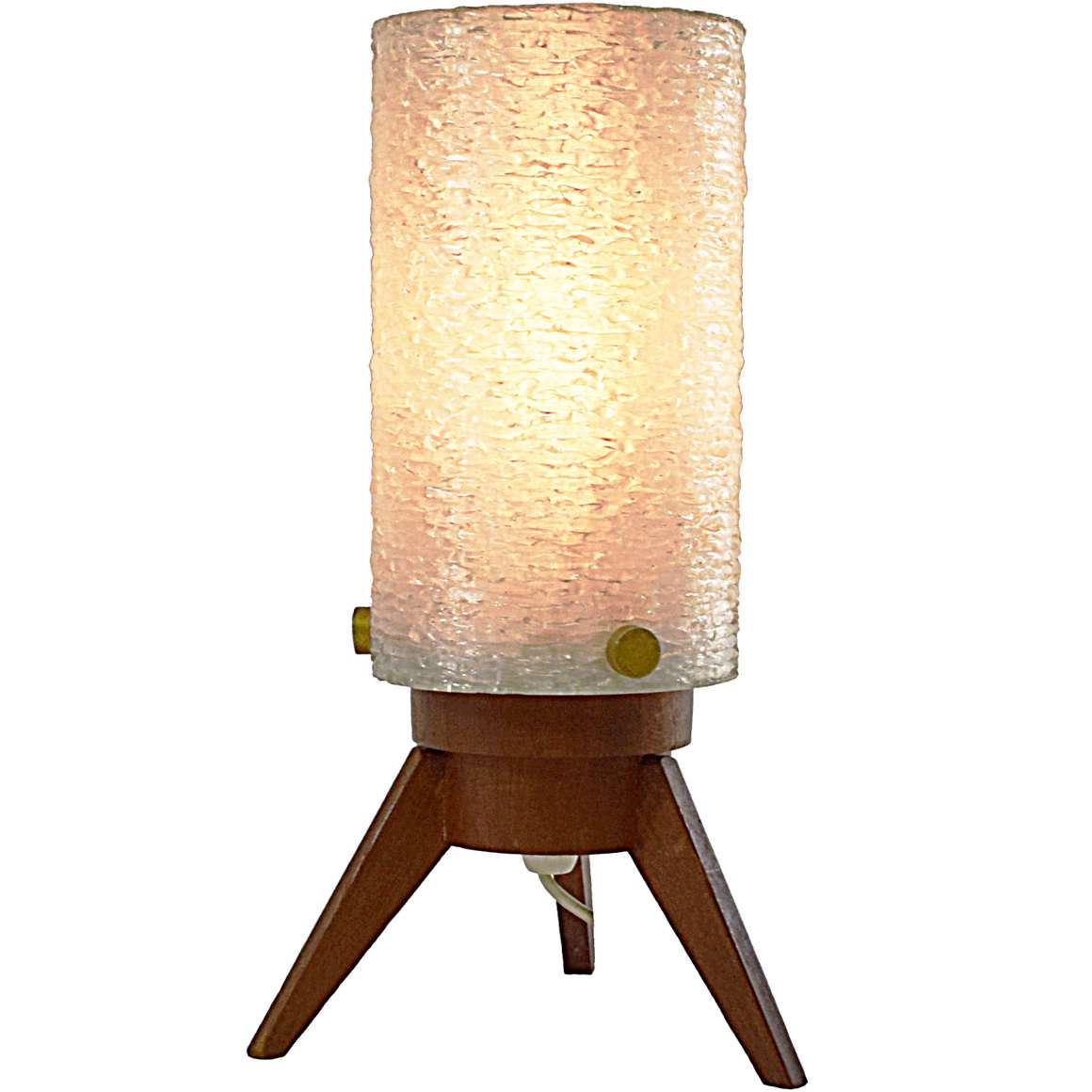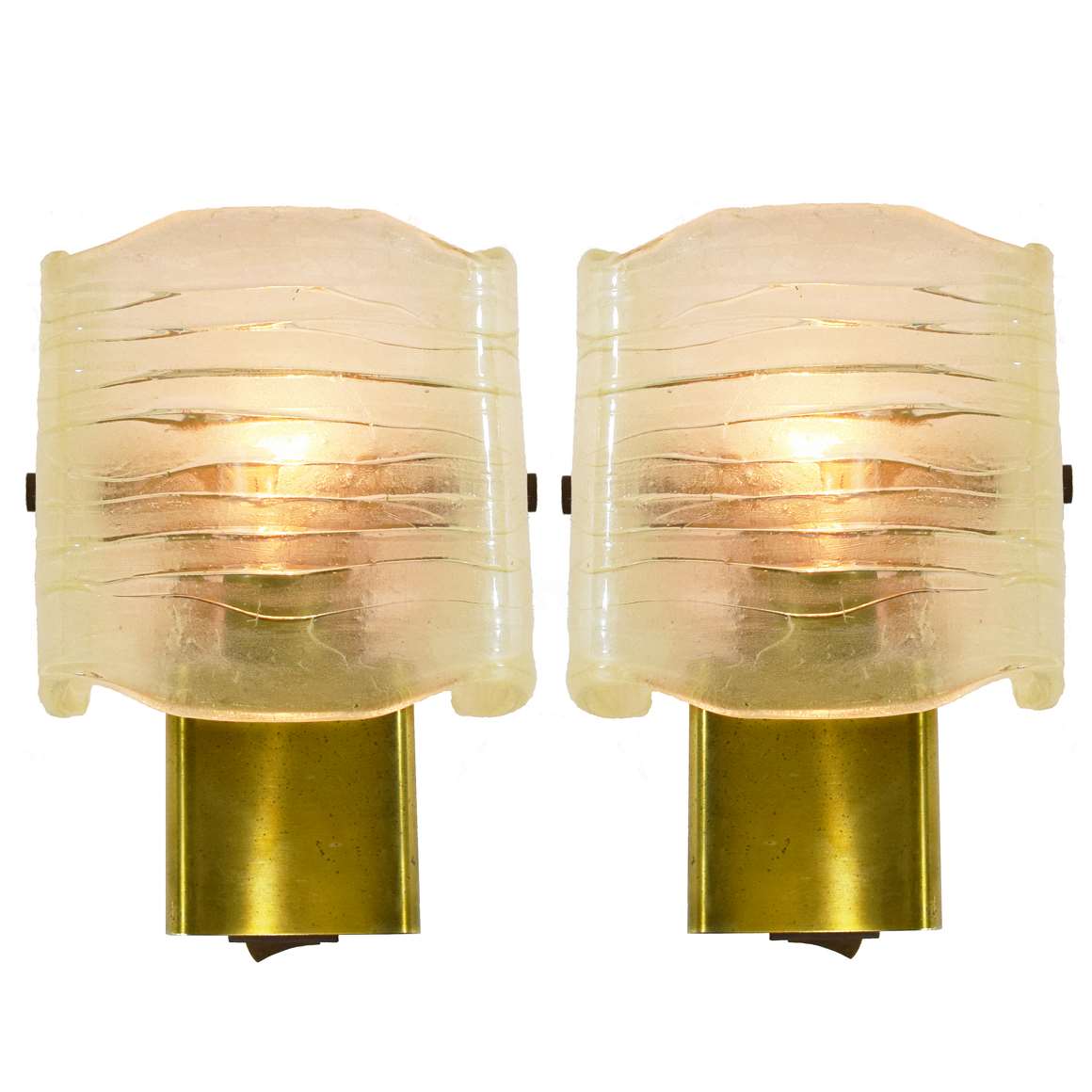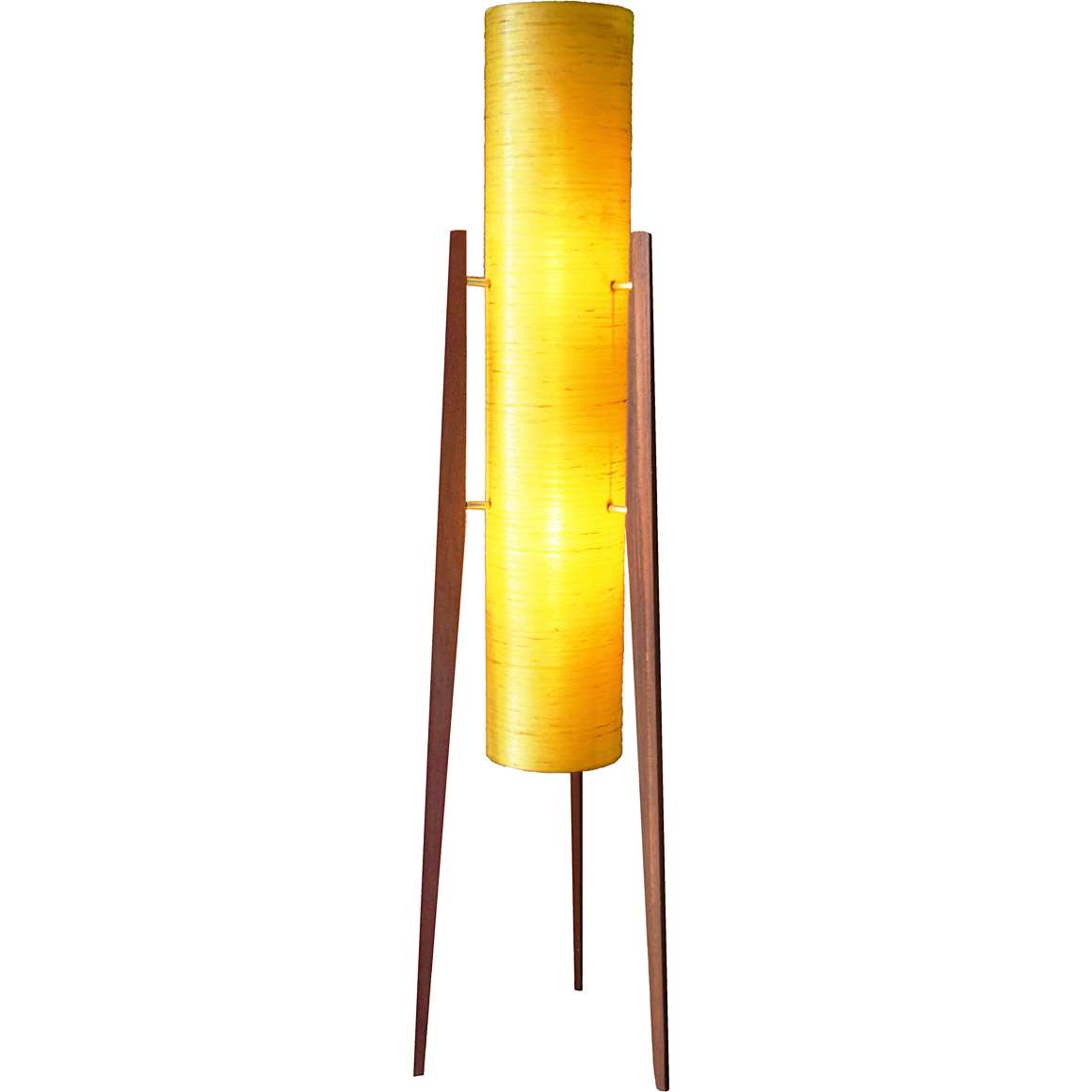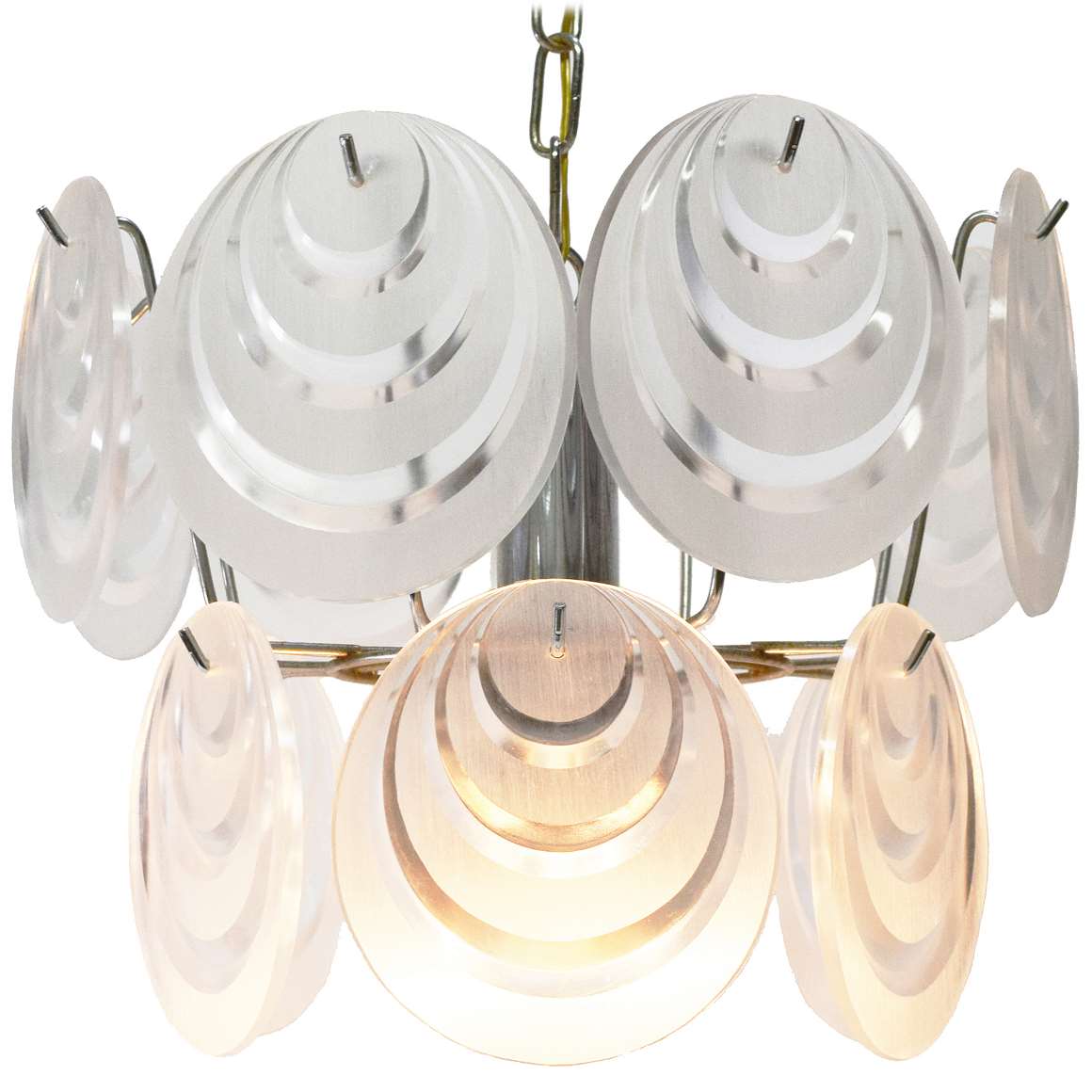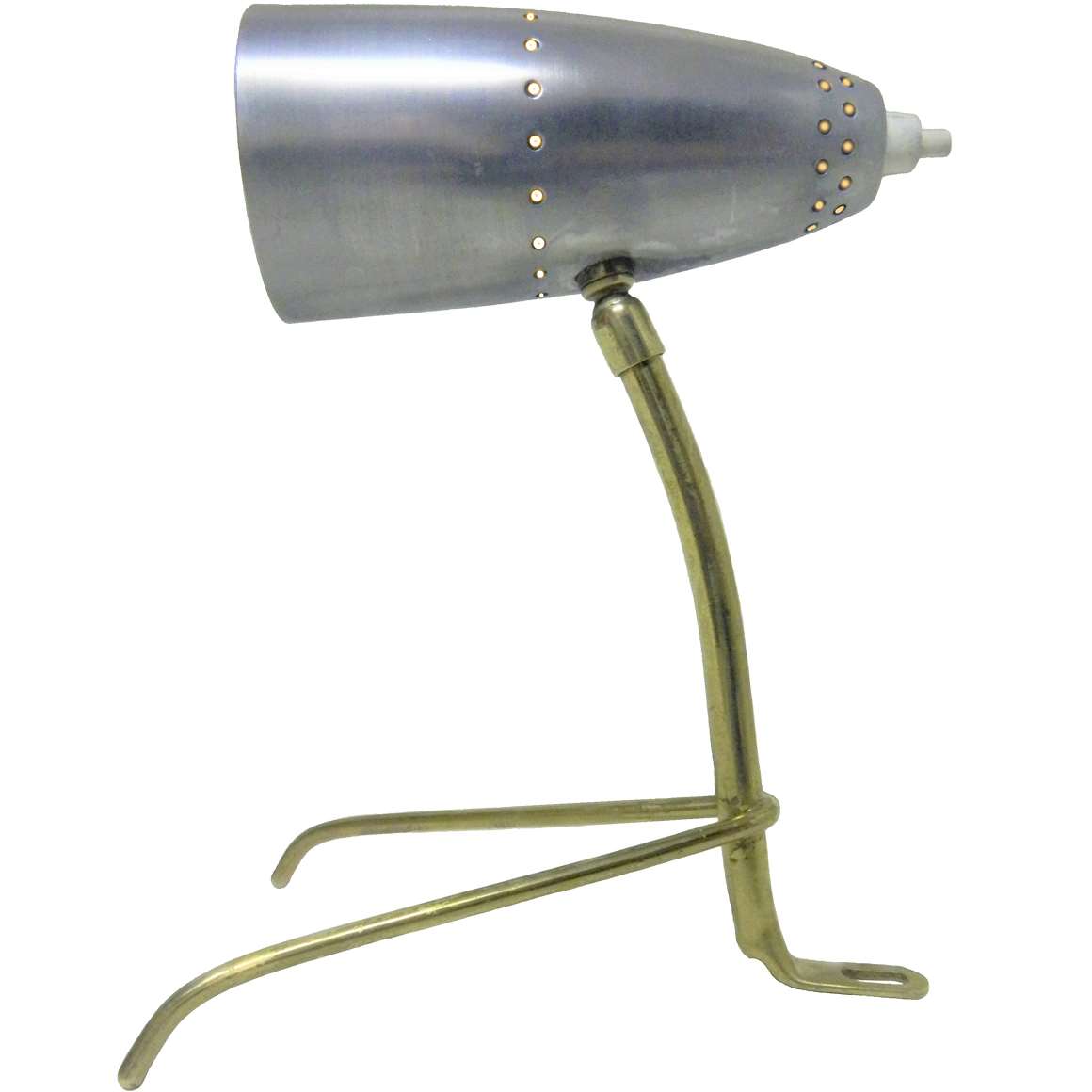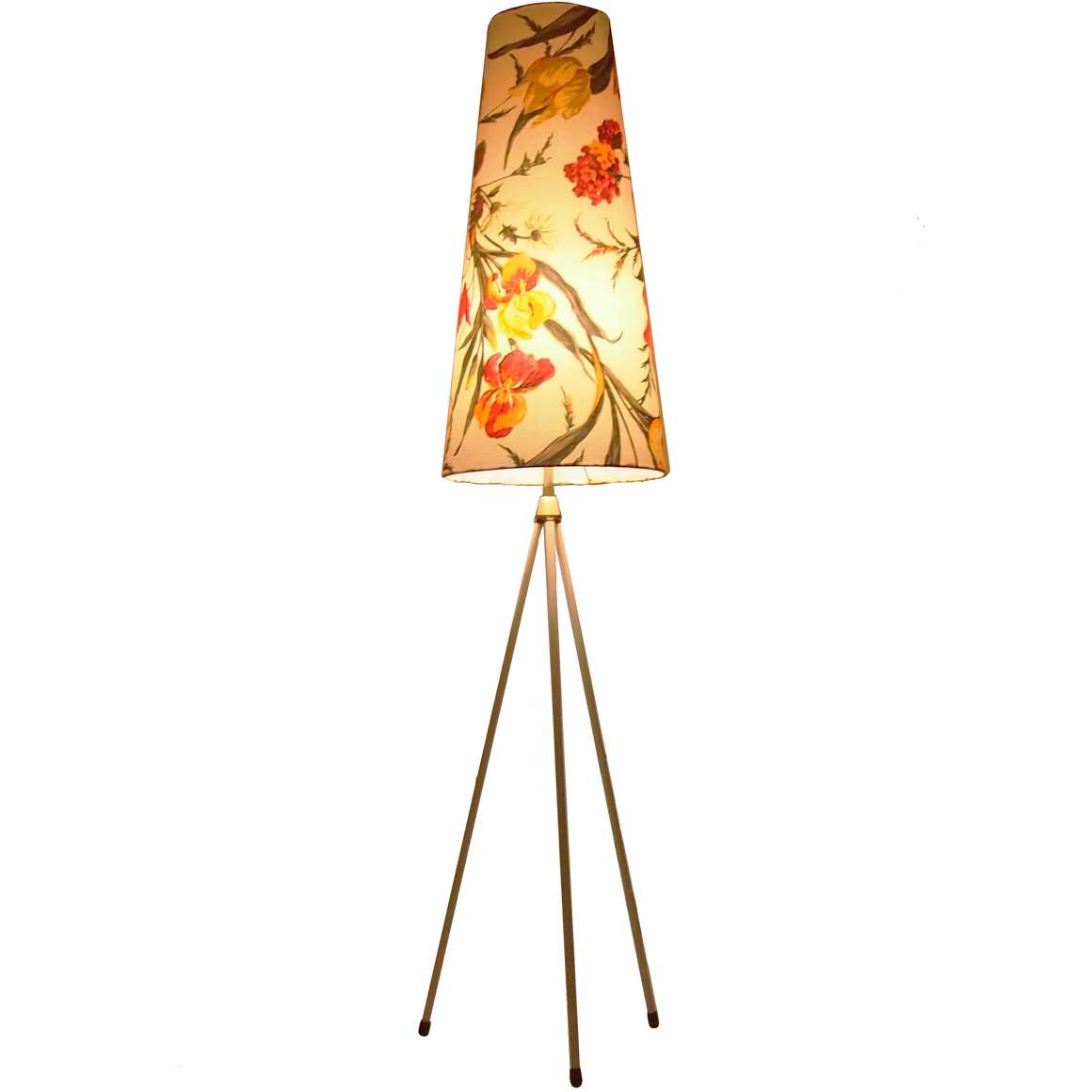Aro Leuchte Diamond Globe Tripod Floor Lamp
Materials: Black painted metal (iron) tripod base made of 3 rods. Brass parts. Red round diamond shaped folded plastic lampshade. Bakelite E27 socket.
Height: 150 cm / 59.05”
Lampshade: ∅ 65 cm / 25.59”
Electricity: 1 bulb E27, 1 x 60 watt maximum, 110/220 volt.
Anytypeof light bulb canbeused, not a specific one preferred.
Period: 1970s – Mid-Century Modern.
Designer: To be appraised.
Manufacturer: Aro-Leuchte(n) GmbH, Arnold Licht GmbH, Gelsenkirchener Strasse 5, 46325 Borken, Germany.
Other versions: This Aro Leuchte diamond globe tripod floor lamp was probably made in several colours. The tripod metal base was used for many other floor lamps.
The lampshade is made of iron wire, white plastic and red folded plastic wrapped around it. Exactly the same material as the stretchable folded flower pot decoration that is for sale since the 1930s and it is still available today. The “manchette” or “cuff” plastic is stretchable thanks to the folds, and therefore fits perfectly.
Lamps with these type of lampshades are often attributed to the famous French designer Georges Léon Rispal. Rispal is famous for his original creations and biomorphic forms. For some lampshades he used similar materials. But it was the DanishHoyrup who used it for the first time with their Pearlshade lamps, designed by Lars Eiler Schiøler.
Aro-Leuchten
Aro-Leuchte GmbH was founded in 1969 as a family business. It ended business in 2006. Not much to be found about the company. The company made many copies of glass lamps, but they made them in plastic or acrylic.
They also produced many floor lamps. You can find several examples here on Vintageinfo.
Many lamps were designed by other companies in the 1950s and 1960s. Aro-Leuchte produced the plastic versions in the 1970s.
Today, the Aro-Leuchten website is offline. The url was www.aro-leuchten.de. Mister Matthias Arnold was the managing director. The company used both Aro-Leuchte as Aro-Leuchten on their labels. The website was also with the N.
Cellulose acetate
Cellulose acetate is an early plastic, sold under the trade names Rhodoid in France and Great Britain, Tenite in the USA and Cellon in Germany. It was first prepared in 1865. Cellulose acetate is used as a film base in photography, for eyeglasses, cigarette filters and playing cards. Acrylic (1930s) and PVC (1920s) were discovered before World War II, but was only widely used since the late 1950s.
Links (external links open in a new window)
VLM switches on the Relco website
Manchettes flower pot – Google images
Clayrton’s – a producer of flower pot covers
Vintageinfo
Other lamps in the folded/pleated cuff style
Italian 1950s ‘Rhodoïd’ floor lamp
Tripod hairpin rocket floor lamp
